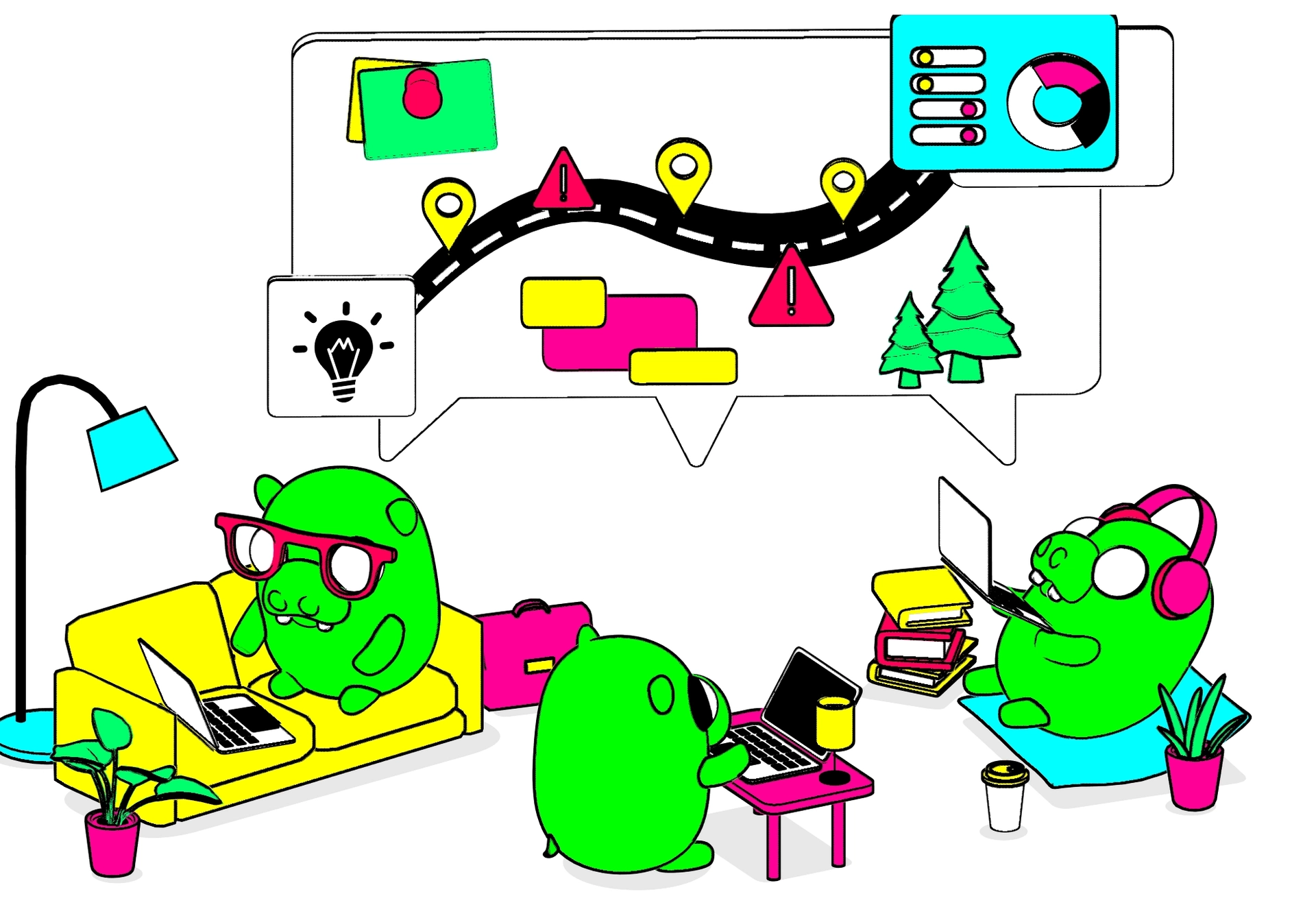Published on
5 min read
What Waze Can Teach Product Leaders – The Power of Real-Time Feedback
Charles Polanco
Head of Product

In today’s rapidly evolving business landscape, product teams face challenges akin to navigating a congested highway: unexpected roadblocks, shifting priorities, and constant pressure to deliver results. Waze, the GPS navigation app, has mastered the art of addressing such challenges in real time. Its approach—leveraging collective intelligence, adaptability, and user-centric design—offers powerful lessons for product leaders, chief product officers, and cross-functional teams striving to navigate the complexities of product development.
By examining Waze’s core principles, we can uncover actionable strategies to enhance collaboration, drive innovation, and create products that resonate with users. Here’s how product teams can apply these insights to their own organizations.
1. Harness the Power of Real-Time Feedback
Waze thrives on its users’ input. Drivers report accidents, traffic jams, and hazards, enabling the platform to adapt instantly and offer alternative routes. This reliance on real-time feedback transforms a passive navigation tool into an active problem-solving ecosystem.
The Lesson: Product teams must prioritize real-time data collection and feedback loops to ensure decisions are grounded in reality. Continuous input allows teams to identify pain points early, refine solutions, and maintain alignment with user needs.
How to Apply It:
Establish mechanisms for gathering feedback during every phase of product development. Leverage analytics tools, surveys, and in-app prompts to capture insights. Just as Waze adjusts routes in real time, product teams can pivot strategies based on user behavior and feedback.
2. Reward Problem-Solvers, Not Just Innovators
While Waze is celebrated for its ability to chart efficient routes, its real value lies in the users who report issues, helping others avoid delays. These problem-solvers contribute to the ecosystem’s success, even though their efforts may seem less glamorous.
The Lesson: Product leaders often celebrate feature launches and big wins, but teams thrive when the quieter, behind-the-scenes contributions are equally recognized. Those who resolve blockers or improve workflows are critical to sustaining momentum.
How to Apply It:
Recognize and reward employees who address inefficiencies, report bugs, or support their peers. Highlight these contributions in team meetings or dashboards, reinforcing the importance of collaborative problem-solving.
3. Cultivate a Culture of Collaboration
Waze’s success is rooted in its community-driven approach, where every user contributes to the greater good. This spirit of collaboration mirrors the dynamics of high-performing product teams, where success hinges on collective effort.
The Lesson: Cross-functional collaboration is essential to navigating complex projects. Developers, designers, and product managers must work together seamlessly to align priorities and tackle challenges.
How to Apply It:
Create a shared sense of purpose by implementing collaborative tools and practices, such as centralized roadmaps, real-time issue tracking, and cross-departmental stand-ups. Celebrate collective achievements to reinforce team unity.
4. Embrace Agility as a Strategic Imperative
Waze’s adaptability is its superpower. It dynamically reroutes drivers based on current conditions, ensuring the fastest path to the destination. Similarly, product teams must be agile, capable of adjusting strategies in response to changing market dynamics or user needs.
The Lesson: Agility isn’t just a buzzword—it’s a competitive advantage. Teams that can pivot quickly and execute decisively are better positioned to seize opportunities and mitigate risks.
How to Apply It:
Adopt Agile methodologies, build flexibility into product roadmaps, and empower teams to make data-driven decisions. Regularly evaluate progress and adapt plans to ensure alignment with overarching goals.
5. Prioritize User-Centric Design
Waze’s user-friendly interface and intuitive functionality are hallmarks of its success. The platform’s focus on delivering value to its users ensures high engagement and loyalty.
The Lesson: Great products start with the user in mind. Teams that deeply understand and address user needs will consistently outperform those that prioritize internal agendas or technical complexity.
How to Apply It:
Invest in user research and usability testing. Involve users early and often in the development process to ensure the product solves real problems. Avoid feature bloat by focusing on core functionalities that deliver measurable value.
Why Waze’s Model Matters for Product Leaders
Waze exemplifies how innovation, collaboration, and user-centricity can transform a functional tool into a game-changing platform. For product leaders, the parallels are clear: building exceptional products requires more than technical expertise. It demands a commitment to adaptability, a willingness to embrace feedback, and an unwavering focus on the end user.
Companies that adopt these principles stand to gain more than just improved team dynamics or faster delivery cycles. According to Harvard Business Review, organizations with strong collaboration practices experience a 5x increase in innovation and a 14% boost in productivity. These are not marginal gains—they are transformative.
In the same way Waze has redefined navigation, product teams that embrace its principles can chart a course to market leadership, delivering value for users, stakeholders, and their organizations. The road to success may not always be smooth, but with the right tools and mindset, it can certainly be navigated.